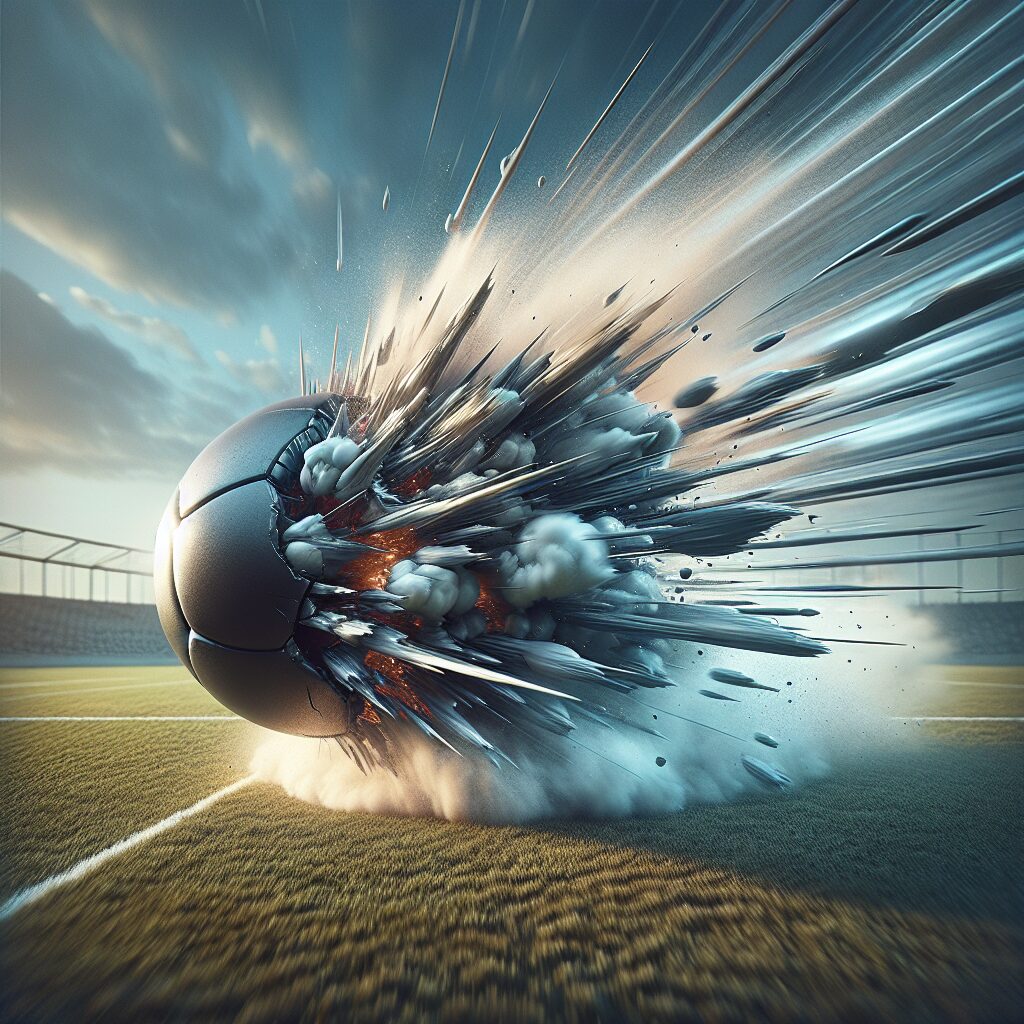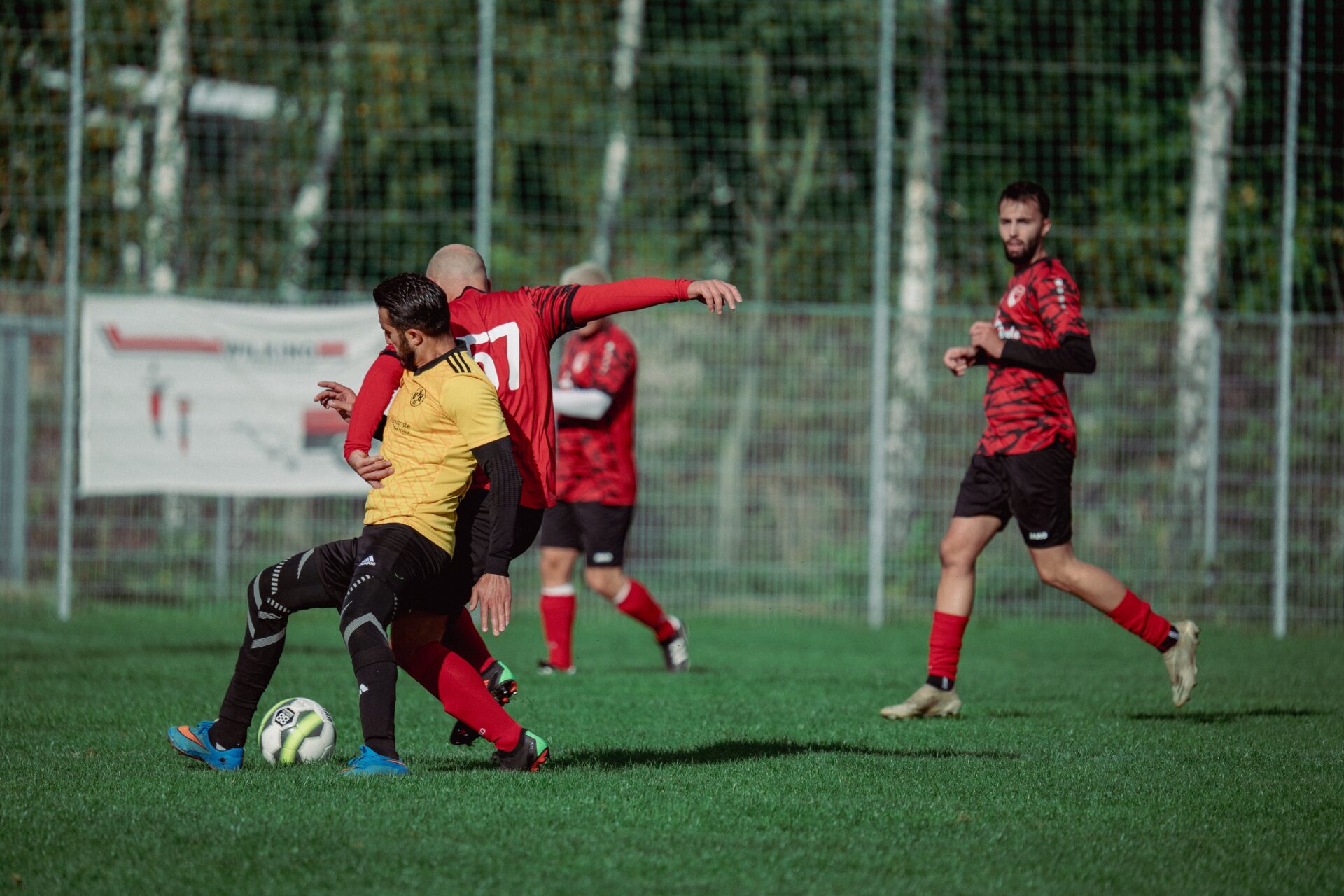Ball Speed and Impact: Unraveling the Connection
When it comes to sports, ball speed and impact are two inseparable elements that can significantly affect the outcome of a game. The term “ball speed” refers to the velocity at which a ball is propelled through the air, while “impact” represents the force with which the ball collides with an object or surface. Understanding the intricate connection between these two factors is crucial for athletes, coaches, and enthusiasts alike, as it can provide valuable insights into the dynamics of different sports and enhance performance.
One specific impact of ball speed that often garners attention is its influence on distance. In various sports such as golf, tennis, baseball, and soccer, a higher ball speed can result in longer shots and more powerful strikes. For instance, in golf, a faster ball speed off the clubface can translate into greater distance on the fairway. Similarly, in tennis, a player who can generate more ball speed with their racquet will have a better chance of hitting a powerful shot that is difficult for their opponent to return. Understanding how ball speed impacts distance and power allows athletes to fine-tune their techniques and equipment to optimize their performance.
In the upcoming sections, this article will delve deeper into the key takeaways associated with ball speed and impact. We will explore the various factors that contribute to ball speed, such as equipment, technique, and physical attributes. Additionally, we will examine how different sports rely on ball speed and impact to achieve specific goals. By unraveling the connection between ball speed and impact, readers will gain a comprehensive understanding of how these elements intertwine and influence the outcomes of their favorite sports. Stay tuned for an in-depth analysis that will unlock the secrets behind achieving optimal ball speed and harnessing its full potential.
Key Takeaways
1. The speed of a ball at impact is determined by various factors such as the initial velocity, impact conditions, and the surface properties of the ball and the object it collides with.
2. The coefficient of restitution (COR) represents the ratio of the final velocity to the initial velocity of a ball after impact. It is a crucial factor that affects ball speed and can vary depending on the materials and characteristics of the impacting objects.
3. The COR value can also be influenced by the energy lost through deformation during impact. A high COR value indicates a more elastic collision with minimal energy loss, while a low COR value suggests a more inelastic collision with significant energy dissipation.
4. Studies have shown that the COR of a ball can be impacted by temperature, humidity, and altitude. These environmental factors can affect the elasticity of the materials involved in the collision, consequently affecting the ball speed.
5. Understanding the relationship between ball speed and impact is essential in various fields such as sports, engineering, and safety measures. By comprehending the factors influencing ball speed, experts can optimize equipment design, improve performance, and ensure proper safety standards are met.
What is the Connection Between Ball Speed and Impact? Unraveling the Connection
Fundamentals of Ball Speed and Impact
Understanding the relationship between ball speed and impact is crucial for golfers looking to improve their game. Ball speed refers to the velocity at which the ball leaves the clubface after impact. Impact, on the other hand, refers to the crucial moment when the clubface makes contact with the ball. The force and angle at which the clubface strikes the ball greatly influence ball speed and subsequent shot distance. Let’s delve deeper into this connection and explore its various aspects.
Clubhead Speed and Ball Speed
One significant factor in determining ball speed is the clubhead speed. A faster clubhead speed typically results in a higher ball speed. Golfers can increase their clubhead speed through proper technique, physical conditioning, and employing the right equipment. By generating more clubhead speed, a golfer can maximize the potential ball speed and achieve greater distance off the tee.
Clubface Angle and Ball Speed
The angle at which the clubface strikes the ball during impact also plays a vital role in ball speed. A square clubface position at impact is essential to achieving optimal ball speed. A closed or open clubface can significantly impact the resulting shot. Golfers must strive to maintain a consistent square clubface at impact to control ball speed effectively.
Centeredness of Impact and Ball Speed
The centeredness of impact refers to the point on the clubface where the ball is struck. Hitting the ball near the center, known as the sweet spot, leads to maximum ball speed. Any deviation from the sweet spot towards the heel or toe can result in decreased ball speed and less desirable shot outcomes. Consistently striking the ball on the sweet spot is a skill that golfers should strive to develop to achieve optimal ball speed.
Equipment Influence on Ball Speed and Impact
The equipment used by golfers can significantly impact ball speed and the connection with impact. Modern club technology, such as adjustable clubhead weights and flexible shafts, allows golfers to optimize their swing for maximum ball speed. Additionally, golf ball construction and dimple patterns can influence ball speed and the resulting impact. Golfers should carefully consider their equipment choices to enhance their ball speed and overall game performance.
Techniques to Improve Ball Speed and Impact
Consistently improving ball speed and impact requires a combination of technique, physical conditioning, and practice. Here are some key techniques to consider:
- Work on increasing your clubhead speed through proper swing mechanics and physical conditioning.
- Foster a consistent square clubface position at impact by practicing your grip and setup.
- Focus on sweet spot accuracy by developing a reliable swing and maintaining balance throughout your swing motion.
- Regularly assess and optimize your equipment choices to suit your swing and maximize ball speed.
- Regularly practice your ball-striking skills through drills and simulated game situations.
By implementing these techniques and understanding the intricate connection between ball speed and impact, golfers can unlock their potential and improve their overall game performance.
FAQ: Ball Speed and Impact
1. What is ball speed and impact?
Ball speed refers to the velocity at which a ball travels after being struck, while impact pertains to the collision between the clubface and the ball during a swing.
2. How does ball speed affect distance?
Ball speed directly influences the distance a ball can travel. Higher ball speeds result in longer shots because the increased velocity allows the ball to cover more distance in the air.
3. What factors affect ball speed?
Various factors affect ball speed, including swing speed, angle of attack, clubface contact, loft of the club, and the ball’s compression and spin.
4. How does impact location on the clubface affect ball speed?
The location of impact on the clubface plays a crucial role in ball speed. Shots struck closer to the sweet spot of the clubface tend to generate higher ball speeds, leading to better distance and control.
5. Can a golfer increase their ball speed?
Yes, golfers can increase their ball speed through proper technique, optimizing club fitting, and improving factors like swing speed, angle of attack, and clubface contact.
6. Does the type of golf ball influence ball speed?
Yes, different golf ball constructions and compressions can impact ball speed. Some balls are designed to maximize distance, while others prioritize control and feel.
7. Is ball speed more important than accuracy?
Both ball speed and accuracy are essential in golf. While distance can provide a significant advantage, accuracy ensures shots land where intended, allowing players to navigate the course strategically.
8. Do different clubs produce different ball speeds?
Yes, different clubs generate varying ball speeds due to factors such as clubhead design, loft, and length. Drivers, for example, are designed to maximize ball speed for longer shots off the tee.
9. How does ball speed affect spin?
Higher ball speeds tend to create more spin, which can impact shot trajectory and control. Balancing ball speed and spin is crucial for optimal distance and accuracy.
10. Can technological advancements enhance ball speed and impact?
Absolutely. Technological advancements in club and ball design have significantly improved ball speed and impact over the years. Innovations like clubface materials and aerodynamic designs contribute to higher velocities and better results.
Final Thoughts: Ball Speed and Impact
Understanding the connection between ball speed and impact is vital for golfers aiming to improve their game. Through meticulous attention to factors like swing speed, angle of attack, and clubface contact, golfers can enhance ball speed, resulting in longer and more accurate shots.
Furthermore, utilizing the right equipment, such as properly fitted clubs and suitable golf balls, can maximize ball speed and optimize performance. Continuously staying updated with technological advancements and leveraging them to your advantage can also yield remarkable improvements in ball speed and impact. By unraveling this connection, golfers can unlock their true potential on the course.




